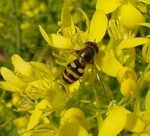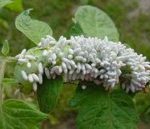Beneficial Insects
go.ncsu.edu/readext?468199
en Español / em Português
El inglés es el idioma de control de esta página. En la medida en que haya algún conflicto entre la traducción al inglés y la traducción, el inglés prevalece.
Al hacer clic en el enlace de traducción se activa un servicio de traducción gratuito para convertir la página al español. Al igual que con cualquier traducción por Internet, la conversión no es sensible al contexto y puede que no traduzca el texto en su significado original. NC State Extension no garantiza la exactitud del texto traducido. Por favor, tenga en cuenta que algunas aplicaciones y/o servicios pueden no funcionar como se espera cuando se traducen.
Português
Inglês é o idioma de controle desta página. Na medida que haja algum conflito entre o texto original em Inglês e a tradução, o Inglês prevalece.
Ao clicar no link de tradução, um serviço gratuito de tradução será ativado para converter a página para o Português. Como em qualquer tradução pela internet, a conversão não é sensivel ao contexto e pode não ocorrer a tradução para o significado orginal. O serviço de Extensão da Carolina do Norte (NC State Extension) não garante a exatidão do texto traduzido. Por favor, observe que algumas funções ou serviços podem não funcionar como esperado após a tradução.
English
English is the controlling language of this page. To the extent there is any conflict between the English text and the translation, English controls.
Clicking on the translation link activates a free translation service to convert the page to Spanish. As with any Internet translation, the conversion is not context-sensitive and may not translate the text to its original meaning. NC State Extension does not guarantee the accuracy of the translated text. Please note that some applications and/or services may not function as expected when translated.
Collapse ▲Not all insects and other tiny residents in the garden and landscape are our foes. Some are friends that you want to attract, maintain or at least alone, so they can do their thing – helping to control the pesky pests. Conservation of beneficials is an important aspect of pest control as part of Integrated Pest Management (IPM) practices.
In fact, most of the insects we see in our gardens or homes are considered either beneficial or harmless. Yes, the obvious damage done by the few species that get our favorite plants get our ire up, but it is true that there are all kinds of helpers for us out in the garden.
Beneficial insects come in an assortment of shapes, sizes and functions. With function as the guideline, beneficials can be divided into four basic types: predators, parasitoids, decomposers/recyclers and pollinators.
Predators include insects and other beneficials that hunt for a living. They catch, kill and eat other insects. In general, predators as large as or larger than their prey. Some types of predators, such as hover or syrphid flies, are predatory only in their juvenile state, while others are hunters  throughout their entire lifecycle. For example: Hover fly larvae tend to prey chiefly on aphids, mealybugs, scale insects and other soft-bodied insects. However adult hover flies feed on the nectar and pollen from flowers and can act as pollinators. Life long hunters such as lady bugs/beetles, some species of lacewings and ground beetles are our own personal strike force consuming problem posing pests. Before you stomp that spider, rethink your aversion to one of the best natural controllers of insect pest populations in and around homes, yards, gardens and crops. That goes for lizards too. These hungry hunters prey on a wide variety of small insects such as crickets, cockroaches, moths, grubs, beetles, flies and grasshoppers, swallowing them down whole.
throughout their entire lifecycle. For example: Hover fly larvae tend to prey chiefly on aphids, mealybugs, scale insects and other soft-bodied insects. However adult hover flies feed on the nectar and pollen from flowers and can act as pollinators. Life long hunters such as lady bugs/beetles, some species of lacewings and ground beetles are our own personal strike force consuming problem posing pests. Before you stomp that spider, rethink your aversion to one of the best natural controllers of insect pest populations in and around homes, yards, gardens and crops. That goes for lizards too. These hungry hunters prey on a wide variety of small insects such as crickets, cockroaches, moths, grubs, beetles, flies and grasshoppers, swallowing them down whole.
For the horror flick fan (remember the 1979 movie Alien?) parasitoids are the pest control beneficials for you. These hunters are drastically different from parasites. A parasitoid always kills its host, while a parasite usually weakens its host but rarely kills it. Most of the time, the parasitoid  lifecycle begins when the adult female lays her eggs inside or on a specific kind of host. When the eggs hatch, the larvae consume the host slowly, so that their unsuspecting prey stays alive until the larvae pupate and can survive separately. Parasitoids are part of complex natural food webs and as such are a cornerstone of biological control of pest populations. Before you nervously begin looking over your shoulder about these garden helpers, know that the size of the adult parasitoid may be influenced by the size of their hosts. The adult stage of most parasitoids are small to tiny, such as members of the braconid wasp family. Braconid wasps do not pose any threat to humans as they do not sting.
lifecycle begins when the adult female lays her eggs inside or on a specific kind of host. When the eggs hatch, the larvae consume the host slowly, so that their unsuspecting prey stays alive until the larvae pupate and can survive separately. Parasitoids are part of complex natural food webs and as such are a cornerstone of biological control of pest populations. Before you nervously begin looking over your shoulder about these garden helpers, know that the size of the adult parasitoid may be influenced by the size of their hosts. The adult stage of most parasitoids are small to tiny, such as members of the braconid wasp family. Braconid wasps do not pose any threat to humans as they do not sting.
In contrast to predators and parasitoids, pollinators are beneficials that we can all appreciate every time we peruse the produce aisle. In fact, three-fourths of the world’s flowering plants depend on pollinators to reproduce. Most fruit, vegetable and seed crops, as well as other plants that provide fiber, medicines and fuel are pollinated by animal pollinators like bees, butterflies, moths, wasps, birds and bats, beetles and other insects. Without pollinators, there would not be any apples, pears, cherries, citrus fruit, coffee, melon, cucumbers, melons, squash or many other common foodstuffs.
We can’t forget the clean up crew. As the last stop in the food chain, decomposers and recyclers benefit us too. Without them breaking down the dead and waste material back into essential chemical nutrients we would be quite literally over our heads in detritus. Nitrogen, carbon, and other raw elements that are essential to all life are released back into the air, water and soil through by means this group of beneficials.
Decomposers include certain types of bacteria, worms, slugs, snails and fungi. Typically 1 gram (0.035 oz) of soil contains around 40 million bacterial cells that can break down organic molecules in the soil, which in turn produce more soil. Fungi primarily decompose litter and work it into the ecosystem, while worms, slugs and snails decompose fruits and vegetables. By understanding the factors controlling decomposition we can protect our food supply, and increase plant growth.
For more information on the value of beneficials as your own personal garden army, how to ID and make the best use of them, take a look at the following:
https://growingsmallfarms.ces.ncsu.edu/growingsmallfarms-beneficials/




